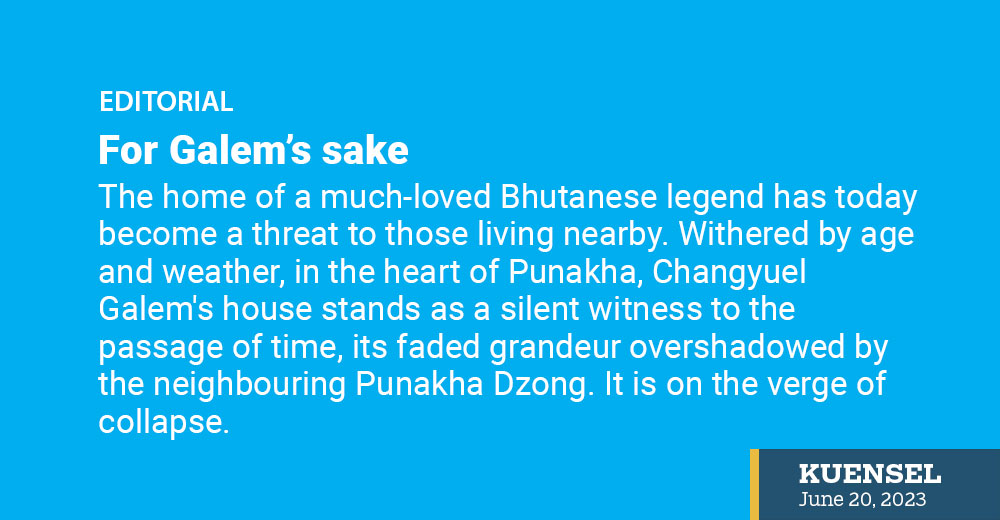The home of a much-loved Bhutanese legend has today become a threat to those living nearby. Withered by age and weather, in the heart of Punakha, Changyuel Galem’s house stands as a silent witness to the passage of time, its faded grandeur overshadowed by the neighbouring Punakha Dzong. It is on the verge of collapse.
Despite being included in the 12 Five-Year Plan for heritage building restoration, this magnificent piece of history has been left to deteriorate due to limited funding. It is high time that we recognise the urgency of preserving our cultural heritage and providing the necessary resources to breathe new life into these architectural marvels.
A recent structural assessment conducted by the Department of Culture revealed the extent of degradation and damage inflicted upon the house over time. The cost of repair and implementing essential structural strengthening measures has been estimated at Nu 5.35 Million, a sum that remains elusive due to budgetary constraints. This financial roadblock has impeded the progress of restoration efforts, leaving the house to crumble further.
Proposal to maintain the structure has been struck due to financial constraints. The preservation of such buildings is of utmost importance, but it is equally vital to find a balance between preservation and allowing the buildings to serve practical purposes that benefit the community.
It is disheartening to witness the absence of both locals and tourists from the premises, once a potential hub of cultural significance. The Changyuel Galem’s house has the potential to be a thriving cultural centre, attracting visitors, both foreign and local, and showcasing our rich heritage. However, without the necessary restoration work, it remains a mere shadow of its former glory.
We know we have to prioritise the restoration of the Changyuel Galem’s house and other heritage buildings that are in desperate need of attention. We also know cultural heritage is a priceless asset that connects us to our roots and serves as a testament to our shared history. We even know that it is our duty to preserve and protect it for future generations. The only problem is that this knowledge has seldom seen action.
Funding for heritage building restoration should be allocated with the same level of importance as other developmental projects, if not more. Investing in the restoration and maintenance of these buildings will not only safeguard our cultural identity, but also create opportunities for tourism, generating revenue and employment in the process.
We call upon the government, private donors, and international organisations to come together and collaborate on funding initiatives that prioritise the restoration of heritage buildings. Let us break free from the shackles of limited funding and invest in our cultural legacy. By doing so, we can revitalise these architectural treasures and ensure that they continue to inspire and captivate generations to come.
Let us unite in our commitment to preserving our cultural heritage and grant the Changyuel Galem’s house the attention and resources it deserves. Only then can we truly celebrate and appreciate the legacy of our past, while paving the way for a vibrant and culturally rich future.


